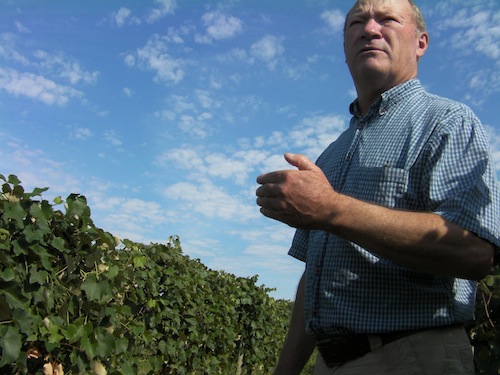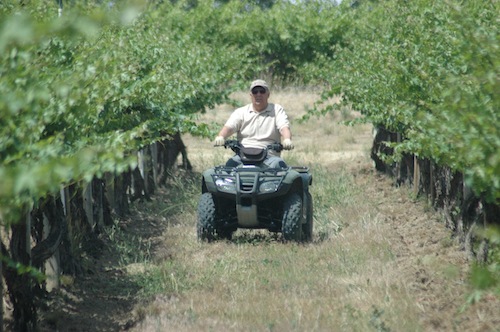
Washington wine grape growers want their vines to be happy, but the last week or so has delivered delirious weather that is bringing a bit too much abundance amid the grape vines.
“We’ve gotten an inch of rain in the past three or four days,” said Dick Boushey, owner of Boushey Vineyards in the Yakima Valley. “That’s not a lot for Seattle.”
But it’s about 15 percent of his annual rainfall, and it’s causing the vines to get a little out of control.
“It’s hard to slow them down,” he said. “There’s not much stress. I’ve never done so much shoot thinning in my life. It looks like I have half my canopy on the ground.”
Kent Waliser, general manager for Sagemoor Vineyards north of Pasco, echoed Boushey’s concerns.
“Normally, we are in charge because we can control the water,” Waliser told Great Northwest Wine. “When you lose control of the water, it’s kind of nerve-wracking. They’re looking a little too happy.”
Washington wine grapes look good so far

Growers are not concerned about the quality of the fruit. In fact, they are pleased with how their grape clusters came through bloom and set, and they are in good shape with just six weeks until veraison – the time when the grapes begin changing color.
There is concern about the size of the canopy – the green growth that helps the grapes ripen. Too much can keep sunshine from getting to the grapes and also can harbor diseases such as mildew.
“There’s a lot of leafing going on, a lot of shoot thinning,” said Kevin Corliss, vineyard operations director for Ste. Michelle Wine Estates. “The whole Columbia Valley is affected. We’re looking forward to warmer temperatures to slow everything down. The vines are growing pretty healthy.”
Corliss said weather forecasts call for temperatures closer to the 90s, which he said should put a halt to the extra growth.
Vigorous vines mean extra work, disease pressure

Wade Wolfe, owner and winemaker for Thurston Wolfe Winery in Prosser, said the extra growth means additional work. More time will be spent thinning the canopy, and bigger berry size from a lack of water stress can result in more bunch rot at harvest if growers aren’t careful.
“There’s going to be more time and effort put into canopy management,” he said.
In the Horse Heaven Hills, which is one of the most arid regions of the Columbia Valley, grape grower Paul Champoux is happy with what he sees.
“My grapes look perfect,” he said. “Everything looks really clean. We’re going to get some 90 degree weather soon, so this doesn’t hurt us.”
He said bloom was about a week earlier than normal, but the cool weather for the past week or so has slowed everything down to where he wants to be.
Boushey said cherry farmers are much worse off. Their crop has been badly hurt by the rain, which splits the fruit.
“The cherry crop is getting beat up every day,” he said. “I’m glad I’m not having to be dependent on my cherry crop this year. It’s been lousy.”

Leave a Reply